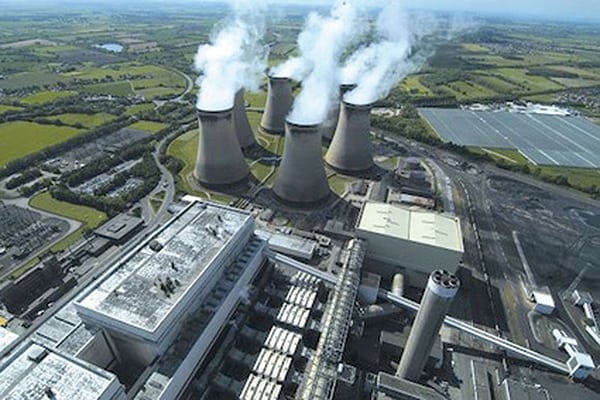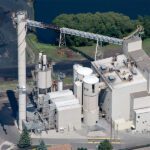The UK’s faltering plans to establish a carbon capture and storage (CCS) industry by the 2020s got a renewed boost in December as the government pledged to back the Drax Group’s White Rose project proposal. The 426-MW coal-fired project, to be built on land adjacent to the existing Drax Power Station near Selby in North Yorkshire at a cost of£2 billion ($3.3 billion), is expected to be fully equipped with CCS technology from the outset to capture 90% of all the CO2 produced by the plant. The trapped greenhouse gas will then be transported by pipeline for permanent storage deep beneath the North Sea seabed.
The “multimillion pound” contract awarded by the UK government to Capture Power Ltd., a consortium of Alstom, Drax, and BOC (a unit of Linde AG) for a front end engineering and design (FEED) study, marks a major milestone in the UK CCS Commercialisation Programme. The UK introduced a similar $1 billion competition to help develop full-chain CCS projects in in 2007, but the $1 billion grant evaporated after the Department of Energy and Climate Change (DECC) failed to reach a financing deal with one remaining finalist—Longannet. The second $1 billion competition announced in April 2012 to support “practical experience in design, construction, and operation of commercial-scale CCS” was opened to both gas and coal-fired power plants. Later that year, the DECC issued a shortlist of four contenders: Teesside, White Rose, Peterhead, and Captain Clean Energy. Shell and SSE’s Peterhead project in Scotland and the White Rose project were named as the two preferred bidders in March 2013.
The White Rose FEED contract also includes the planned development of a CO2 transportation and storage solution—the Yorkshire Humber CCS Trunkline—to be undertaken by National Grid Carbon Ltd. Capture Power and National Grid Carbon will now work with the UK government to conclude a project contract for the construction and operation of the full-chain CCS project that will demonstrate oxyfuel combustion technology. Project co-developer Alstom will build, operate, and maintain the power plant, including its carbon capture facilities, while BOC will build, operate, and maintain the air separation unit that provides oxygen for the operation of the oxyfuel combustion capture plant. A final investment decision could come as early as 2015, which could mean construction will begin by 2016 and the plant will be operational by 2020.
According to the Global CCS Institute, nearly $22 billion was committed by an assortment of governments in direct funding for large-scale CCS demonstration projects between 2008 and 2012, but some funding mechanisms were canceled before they were legislated due to the global financial crisis or changing government priorities. As of October 2013, for example, the institute estimated the highest amount of funding any single CCS project could receive from the European Union’s NER300 program is €290 million. Given the program’s rules, the international CCS watchdog group says, two CCS demonstration projects at most are likely to be funded in the second round—which represents less than 10% of the €6 billion to €9 billion proposed by the European Commission when the program was initially designed. “The fall in funding value is largely due to the decreased carbon price in Europe; the NER300 program is funded by the forward sale of carbon allowances.” Notably, the White Rose CCS project is the only applicant the UK government has put forward to the European Investment Bank for NER300 funding.
CCS has been the cornerstone of the UK’s plans to bolster its energy security and mitigate climate change, and the DECC has pushed for a reform of the UK electricity market so CCS will be able to compete with other low-carbon sources. The UK’s FEED award to White Rose in December was announced at the opening of the Drax coal-to-biomass conversion unit (Figure 2). Drax, which is looking to transform itself into a predominantly wood pellet–fueled generator, recently converted one of its six generating units at the 4-GW Drax station to biomass and intends to convert a further two units by 2016 at a cost of£700 million.
—Sonal Patel, associate editor (@POWERmagazine, @sonalcpatel)











